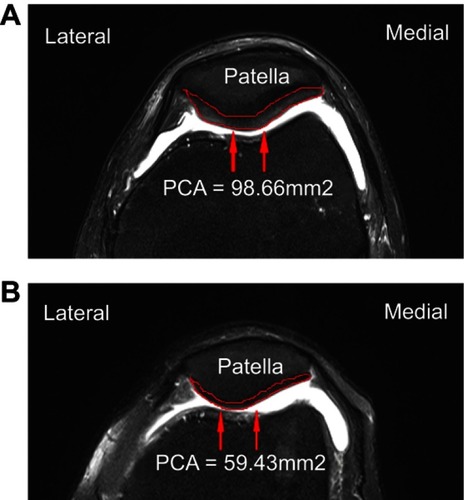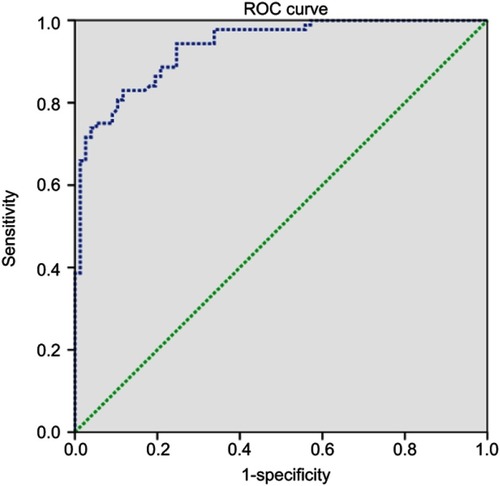Figures & data
Table 1 Comparison of the characteristics of control and KOA group
Figure 1 Measurement of the patellar cartilage cross-sectional area (PCA) on transverse turbo spin echo fat-suppressed T2-weighted image. (A) Control group. (B) Knee tibiofemoral osteoarthritis group.

Table 2 Age distribution of patients with mean PCA of control group
Table 3 Age distribution of patients with mean PCA of KOA group
Table 4 Sensitivity and specificity of each cutoff point of the PCA
Figure 2 Receiver operating characteristic (ROC) curve of patellar cartilage cross-sectional area (PCA) for prediction of knee osteoarthritis. The best cutoff point of PCA was 76.06 mm2, with sensitivity of 83.0%, specificity of 83.1% and AUC of 0.94. PCA AUC (95% CI) =0.94 (0.90–0.97).

